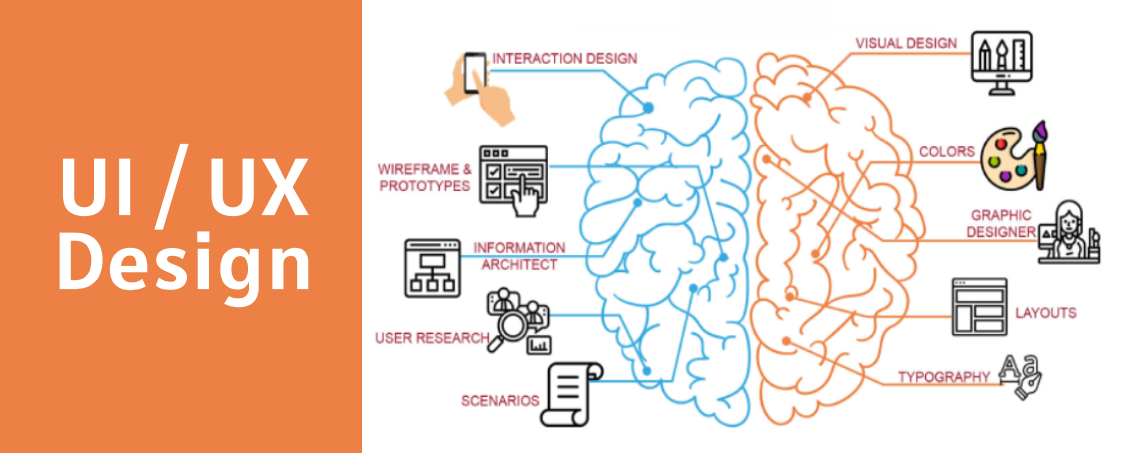Introduction: User interface (UI) and user experience (UX) design are critical in shaping the success of digital products and services in today’s ever-changing digital landscape. Designers rely on a variety of tools to meet the demands of modern users, one of which has gained significant prominence is InVision Studio. This article will look at the role of InVision Studio in digital UI/UX and its future potential.
Understanding InVision Studio
InVision Studio is a robust design tool that was developed with the primary focus on enhancing UI/UX design processes. It offers a wide array of features and functionalities tailored to meet the unique demands of designers. These capabilities include prototyping, animation, collaboration, and a user-friendly interface that empowers designers to create engaging and visually appealing digital experiences.
The Current Role of InVision Studio in Digital UI/UX
Prototyping and Interactive Design: InVision Studio is known for its powerful prototyping capabilities. Designers can create interactive prototypes that simulate the actual user experience, allowing stakeholders to visualize and test the design before development begins. This results in more refined and user-centric products.
Collaboration and Teamwork: In today’s design landscape, collaboration is key. InVision Studio facilitates seamless collaboration among designers, developers, and clients. It provides a shared platform for feedback, annotations, and version control, streamlining the design review and approval process.
Animation and Microinteractions: The role of animations and microinteractions in enhancing UI/UX cannot be overstated. InVision Studio offers a range of animation tools that empower designers to create fluid and engaging user interfaces, adding that extra layer of interactivity and delight to the user experience.
Responsive Design: With the increasing diversity of devices and screen sizes, responsive design is crucial. InVision Studio allows designers to create responsive designs, ensuring that the user experience remains consistent across various platforms and devices.
User Testing and Feedback: InVision Studio’s user testing features enable designers to gather valuable feedback from real users early in the design process. This iterative approach helps in refining designs and ensuring they align with user expectations.
The Future of InVision Studio in UI/UX Design
As the digital landscape continues to evolve, the future prospects of InVision Studio in UI/UX design look promising. Here are some potential areas where InVision Studio may play an even more significant role:
AI-Powered Design Assistance: With the integration of artificial intelligence (AI), InVision Studio could offer design suggestions, automating repetitive tasks, and providing valuable insights into user behavior to inform design decisions.
Enhanced Prototyping and Simulation: InVision Studio may further improve its prototyping capabilities, allowing designers to create highly realistic simulations of digital experiences, making it easier to convey complex ideas to stakeholders.
Augmented Reality (AR) and Virtual Reality (VR) Integration: As AR and VR gain traction, InVision Studio may incorporate tools and features to facilitate the design of immersive and interactive experiences for these emerging platforms.
Seamless Integration with Development: The future may see even tighter integration between InVision Studio and development tools, enabling a smoother transition from design to code.
Sustainability and Accessibility: With a growing focus on sustainability and accessibility in design, InVision Studio could introduce features to help designers create more eco-friendly and inclusive digital experiences.
Conclusion
InVision Studio has already established itself as a valuable asset in the realm of digital UI/UX design. Its role in facilitating collaboration, prototyping, and interactive design is instrumental in creating user-centric digital products. Looking ahead, InVision Studio’s potential for growth and innovation holds promise, and it is likely to continue to be an essential tool for designers shaping the future of digital experiences. As the digital landscape evolves, so too will InVision Studio, adapting to meet the ever-changing demands of the UI/UX design industry. Designers and teams can look forward to a future where InVision Studio continues to empower them to create exceptional digital experiences.
What is InVision Studio, and how does it differ from other design tools?
InVision Studio is a design tool specifically tailored for UI/UX designers. It stands out for its robust prototyping, animation, and collaboration features. It’s designed to streamline the UI/UX design process and facilitate teamwork among designers, developers, and clients.
How does InVision Studio contribute to improving user experience (UX)?
InVision Studio enhances UX by enabling designers to create interactive prototypes that simulate the actual user experience. This allows for early user testing and feedback, resulting in more refined and user-friendly digital products.
Can InVision Studio accommodate responsive design for various devices?
Yes, InVision Studio supports responsive design. Designers can create layouts and prototypes that adapt to different screen sizes and devices, ensuring a consistent and optimal user experience across platforms.
What role does InVision Studio play in collaboration and teamwork among design and development teams?
InVision Studio fosters collaboration by providing a shared platform for designers, developers, and clients to review and provide feedback on designs. It also offers version control and annotation features to streamline the feedback and approval process.
What are the future prospects for InVision Studio in UI/UX design?
The future of InVision Studio looks promising, with potential enhancements in AI-powered design assistance, augmented reality (AR) and virtual reality (VR) integration, and even tighter integration with development tools. It is likely to continue evolving to meet the changing demands of UI/UX designers in the digital landscape.


